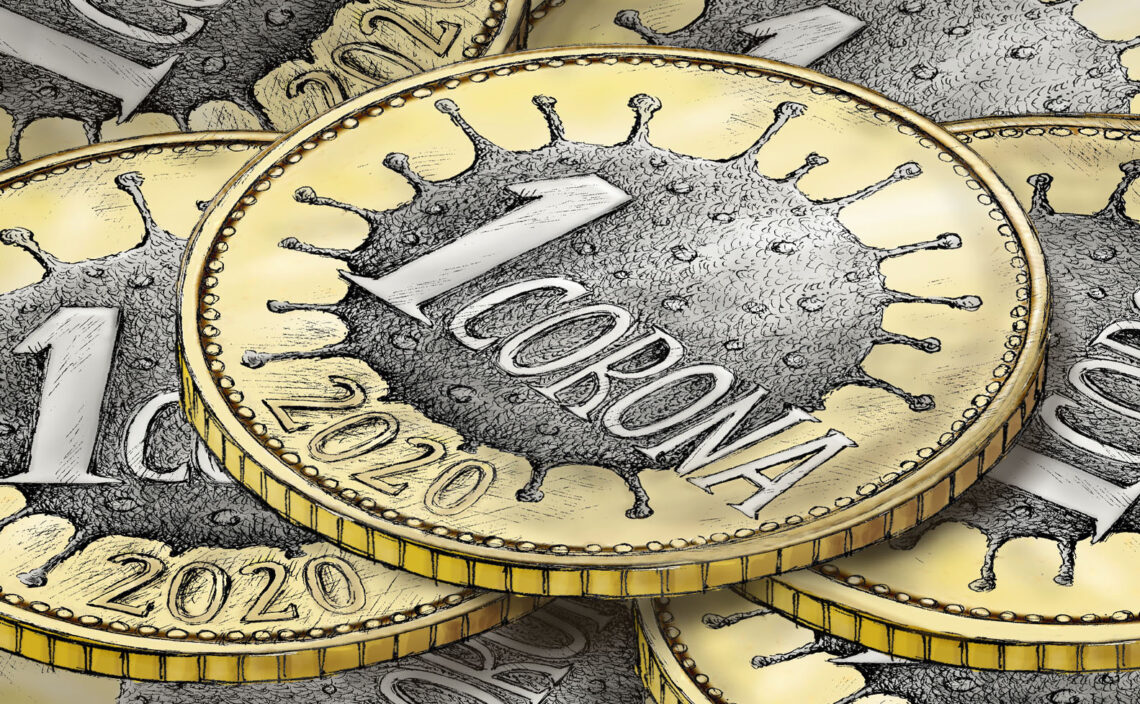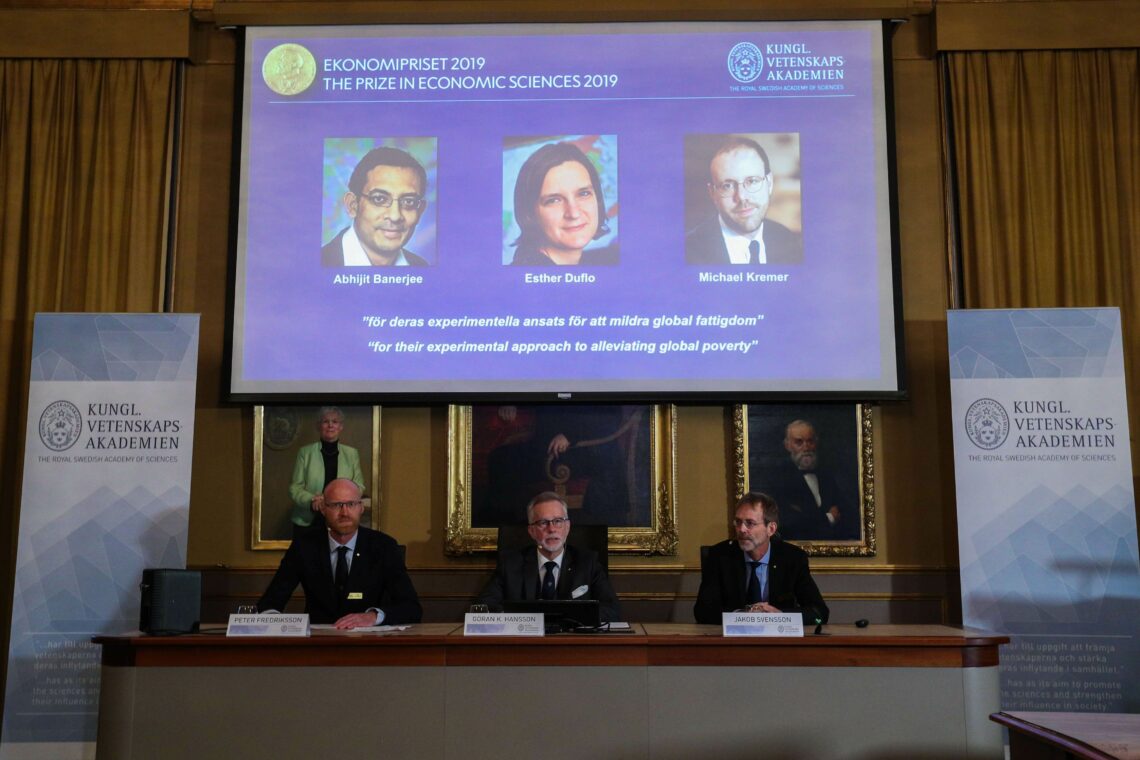The future of coronomics
Concerns over the economic reality after the pandemic have caused many economists to adopt an approach meant to be more humane than theoretical. However, the “coronomics” models they are proposing are far from new, and have already been proven wrong.

In a nutshell
- The crisis has intensified the push for a more “humane” approach to economics
- The proposed solutions mostly consist of old ideas that have repeatedly failed
- Governments with authoritarian tendencies could be tempted to adopt these measures permanently
This report is part of a GIS series on the consequences of the COVID-19 coronavirus crisis. It looks beyond the short-term impact of the pandemic, instead examining the strategic geopolitical and economic effects that will inevitably be felt further in the future.
“Coronomics” is a new hybridism that has started to circulate on the internet to name what, in the midst of the catastrophe, is largely unknowable: the potentially dire economic consequences of the COVID-19 pandemic.
So far, journalists and bloggers who bring up the term tend to accompany it with rather vague and uncorroborated content. While some refer to “coronomics” to describe the hibernating economies during the state of emergency, others spin narratives around a post-pandemic future, in which, for better or worse, an entirely new economic system would supposedly emerge.
What unites the disparate approaches is the conviction that, within weeks, the coronavirus has plunged us into a world of radical uncertainty where “none of the old rules make sense.”
“Coronomics” might just be the latest hype word that everyone uses and abuses in their own way. Once the virus is gone, the concept will probably be tossed into the dustbin of social media as quickly as it appeared. What the coronavirus crisis has made clear though, is that economics as a social science must be rethought.
Rehumanizing economics
Since the financial crash of 2008, economists have become some of the least-trusted professionals. As even the OECD points out, the profession all too often failed to raise the alarm over impending global, sometimes monumental, threats, simply because its practitioners misunderstood the underlying mechanisms. Too wrapped up in their abstract models, economists at best provide prefabricated solutions to prefabricated problems, thereby losing sight of what their science is really about, critics say.
Since the financial crash of 2008, economists have become some of the least-trusted professionals.
The idea to put the “human” back into economics is not new. The pandemic merely propelled it into the spotlight. “There are no iron laws of economics keeping us from building a more humane world,” declare, for instance, MIT professors Esther Duflo and Abhijit Banerjee. They were awarded the Nobel Prize in Economic Sciences last year, for this alternative thinking.
If we are “serious about changing the world,” they insist, we need a “better kind of economics to do it,” meaning an approach that is more humble, honest and, above all, down-to-earth. When formulating policy recommendations, economists should adopt the “mindset of a plumber” rather than that of a mathematical model-builder, detached from people’s lives and hardships.
Doom and gloom
The economics profession is overwhelmed by the magnitude of the slump the virus is likely to bring along. Analysts’ and statisticians’ “crystal ball” has never been “murkier,” writes The Spectator’s Kate Andrews. All macroeconomic forecasts for 2020, made some months ago, are worthless now that a black swan turned the world upside down. No one alive has ever experienced a lockdown of half the planet’s population. Nobody has the slightest idea on how much, and for how long, gross domestic product (GDP) will plunge as a result. For weeks, doomsayers outbid each other in the media. “This is not a recession. It’s an Ice Age,” one article read. The Financial Times forces the issue: “The world economy is now collapsing: a microbe has overthrown our arrogance and sent global output into a tailspin.”
In early April, the first official estimates by the International Monetary Fund (IMF) were released. Unsurprisingly, the fund’s latest World Economic Outlook projects the global economy will contract sharply (by -3 percent in 2020). Growth rates of the euro area will be particularly hard hit (-7.5 percent). The IMF is aware that its predictions are subject to significant change if the “Great Lockdown” is to continue for many more weeks, but already now it is clear that the expected macroeconomic fallout will be much worse than after the 2008 financial crisis.
There is room left, fortunately, before the IMF’s projections (-9.1 percent for Italy, -8.0 percent for Spain, -7.2 percent for France, and -6.5 percent for the United Kingdom, for example) catch up with some think tanks’ dark scenarios that predict a shrinking of British GDP by 13 percent this year (the worst slump “in 300 years,” warns the Resolution Foundation). Still, as IMF Chief Economist Gita Gopinath points out, the world economy might not come back to life any time soon.
Useless metrics
What if GDP was an elusive goal that is no longer relevant? The question is worth asking.
Once a fringe position, the critique of this key macroeconomic variable has begun to receive more attention with the coronavirus crisis. It has become obvious that the obsessive pursuit of economic growth, at the heart of contemporary society, does not necessarily solve the huge challenges humanity faces. There may be paths to progress and prosperity other than growth and, eventually, they should capture our interest now that the house of cards is coming down.
Contemplating the “other side of growth” is precisely what Ms. Duflo and Mr. Banerjee’s thesis is about, and it could give us some hope. Changing the narrative on public debt and deficits could take a load off our minds. High public debt “might not be as bad” as is often thought, former IMF Chief Economist Olivier Blanchard keeps assuring us. Worrying about debt-to-GDP ratios spiraling out of control is not helpful in the midst of a crisis. The lesson was painfully learned after the 2008 crash: fiscal austerity during times of hardship does more harm than good.

Sea of liquidity
Not allowing public debt and deficit levels to flare up in the coming months or years would be “utterly irresponsible”, Mr. Blanchard opines. Now is not the time for “frivolous orthodoxy,” agrees Ms. Duflo. The message was heard by EU authorities, who immediately suspended the Stability and Growth Pact. Budgetary rules have been relaxed in many countries to allow governments to spend as much as they need.
Historic stimulus packages are being granted by central banks all over the world. Both the American Federal Reserve and the European Central Bank (ECB) announced aggressive responses to the COVID-19 pandemic. Besides the first round of quantitative easing ($700 billion), the Fed injected an additional 2.3 trillion support plan in loans into the American economy. As a result, its balance sheet ballooned to $5.3 trillion by the end of March, the highest level ever. It is on its way to double later this year, according to Wall Street forecasts.
The ECB took its liquidity-providing efforts to an unseen level, too. First, it added an extra 120 billion euros to its ongoing (240 billion euros per year) net Asset Purchase Program (APP). Then, it launched an additional Pandemic Emergency Purchase Program (PEPP) with an envelope of 750 billion euros until the end of the year.
Also, banks’ conditions for granting loans to small and medium-sized businesses were eased considerably. For the first time since the creation of the ECB’s supervisory mechanism, banks’ capital requirements have been lowered.
The question is whether all this liquidity inundating the economies can ever dry up. The excessive supply could become a problem if the demand for money does not follow. The latter can be expected to decrease, as unemployment rises sharply and the recovery in consumption potentially remains timid in the next months.
So far, we are told not to worry about hyperinflation, at least not yet. ECB President Christine Lagarde only briefly mentioned that the implications of the coronavirus crisis for inflation over the medium term are surrounded by “high uncertainty.”
Corona-Keynesianism
We have entered a “Keynesian moment par excellence,” rejoices Ms. Duflo. The Keynesian “free lunch” is on the table again, along with the motto that exceptional situations require exceptional measures.
At first, there was the need to give ill-prepared public health systems the time and means to cope with rapidly increasing volumes of infected patients in need of intensive care. Then, lifeboats had to be provided for private sector businesses and employees who were suffering from the mandatory shutdown of their activities.
Some economists already say that the current public aid proposals do not go far enough. Economists Gabriel Zucman and Emmanuel Saez urge governments to act as “payers of last resort,” allowing hibernating businesses to stay alive until the worst of the health crisis is over. Finally, in the medium term, governments should make up for evaporated demand through prodigious programs of public spending.
Some economists already say that the current aid proposals do not go far enough.
In the long run, many call for “joint actions to win the war.” Coronavirus is testing our “collective capacity” to respond, declares OECD Secretary-General Angel Gurria. He is right. Multilateralism should be preferred over isolationism to cope with this unprecedented global crisis. Current fights between eurozone states over the mutualization of public debt through a new financial instrument (“coronabonds”) indicates, that the path toward international solidarity is fraught with many hurdles.
Revolutionary taxation
Especially now, the wealthy north must not abandon the poor south, not only within Europe, but worldwide, also posit Ms. Duflo and her husband and co-author Mr. Banerjee, who focus on the “losers” rather than the “winners” from globalization. The couple has been saying for years that those left behind by the spectacular international trade expansion need to be “compensated.” The brutal acceleration of de-globalization, provoked by the pandemic, could provide an excellent opportunity to reshuffle the cards along more “moral” lines, they think.
Ms. Duflo advocates an “extremely progressive” taxation system, proposing confiscatory top-marginal income tax rates, the purpose being to finance transfers from rich to poor, on local, national and global levels. She goes further by stating: “It is not financial transactions that caused the coronavirus,” but they are “part of a system” that could be “challenged.” One of the “positive” aspects of the dreadful crisis, she adds, is that the wealth-tax issue (long advocated by her compatriots Thomas Piketty, Gabriel Zucman and Emmanuel Saez) now has a good chance of being taken seriously.
Socialism, Keynesianism, and a bit of old wine in new bottles – is this all that “good” (meaning more “humane”) economics has to offer for “bad times”? It is doubtful that the economic profession can win back its lost trust with propositions that have clearly failed in the past.
Coercionism
Granted special prerogatives during the state of emergency, governments and ever-more-politicized central banks impose themselves as the dominant players in managing the coronavirus crisis. The burning question is: to what extent will massive state intervention in economic, social and private life go on once the pandemic is over? There is a risk that this state of exception will become a permanent paradigm of government, including in the most advanced nations.
To what extent will massive state intervention in economic, social and private life go on once the pandemic is over?
It was surprising to see how rapidly and easily liberal democracies moved, within days, from imposing social distancing to full-blown lockdowns, forbidding people to leave their homes without permission for months. What prohibition could come next? Authorities have already started worrying about people drinking alcohol during self-isolation. “We should really ask ourselves what risks we are taking in leaving people under lockdown in their homes with a substance that is harmful both in terms of their health and the effects of their behavior on others, including violence,” cautioned the World Health Organization.
In the pandemic’s most critical phase, with tens of thousands of lives at stake, some form of coercion was certainly justified, even constitutionally required, under the duty of protection of life that states have vis-a-vis their citizens, as former German Federal Constitutional Court Judge Udo di Fabio pointed out. However, economist Deirdre McCloskey is also right in saying that an “occasionally necessary coercion” does not justify a “future of coercionism” – a message that is unfortunately not heard enough through the current social media noise.
Thus, in the longer run, governments with paternalistic or even authoritarian tastes might be tempted to use coronavirus as a pretext for exerting more and more power and control over populations that are increasingly infantilized – for “their own good.”








